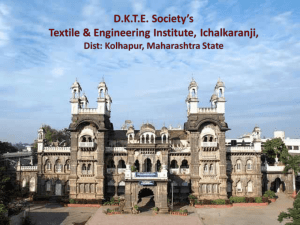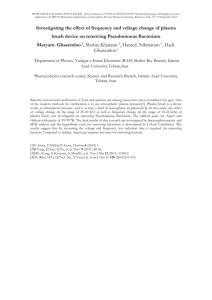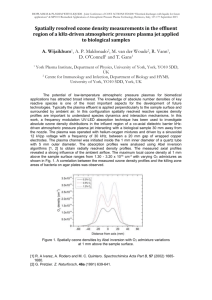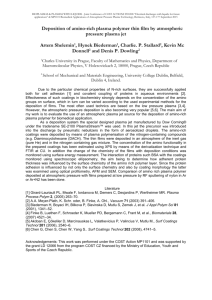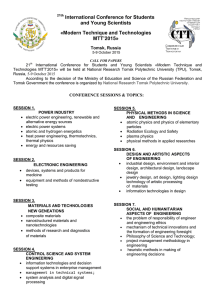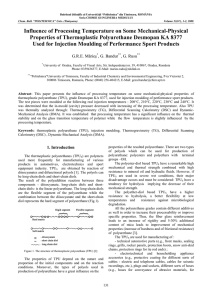Hydrophilic modification of polyurethane and polystyrene by
advertisement
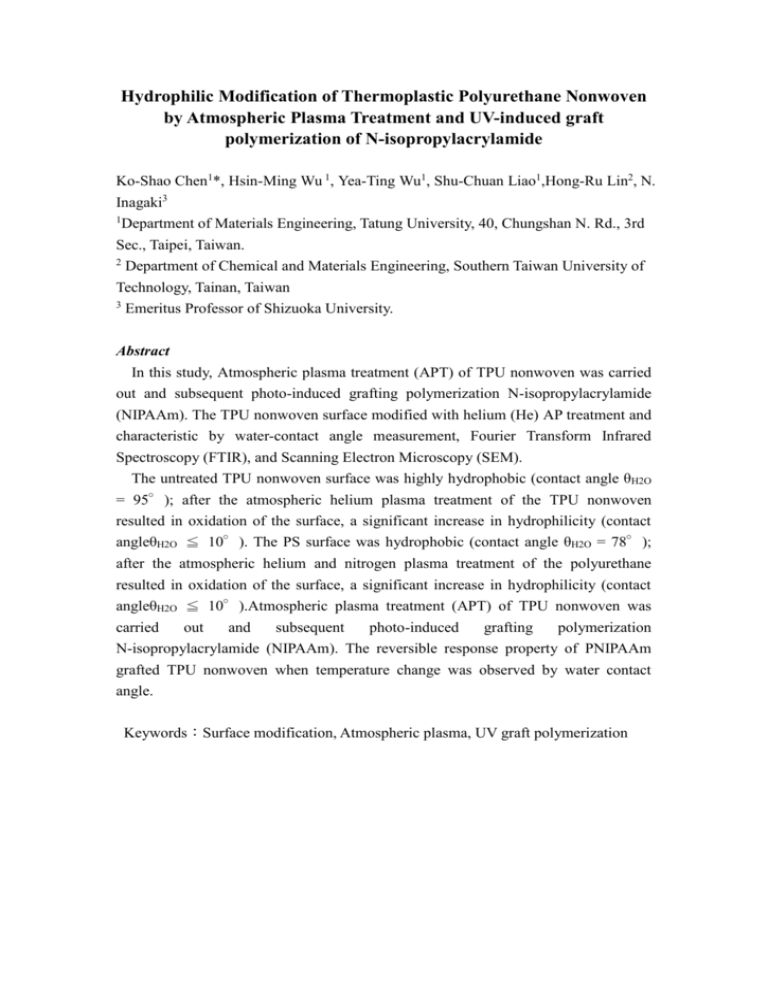
Hydrophilic Modification of Thermoplastic Polyurethane Nonwoven by Atmospheric Plasma Treatment and UV-induced graft polymerization of N-isopropylacrylamide Ko-Shao Chen1*, Hsin-Ming Wu 1, Yea-Ting Wu1, Shu-Chuan Liao1,Hong-Ru Lin2, N. Inagaki3 1 Department of Materials Engineering, Tatung University, 40, Chungshan N. Rd., 3rd Sec., Taipei, Taiwan. 2 Department of Chemical and Materials Engineering, Southern Taiwan University of Technology, Tainan, Taiwan 3 Emeritus Professor of Shizuoka University. Abstract In this study, Atmospheric plasma treatment (APT) of TPU nonwoven was carried out and subsequent photo-induced grafting polymerization N-isopropylacrylamide (NIPAAm). The TPU nonwoven surface modified with helium (He) AP treatment and characteristic by water-contact angle measurement, Fourier Transform Infrared Spectroscopy (FTIR), and Scanning Electron Microscopy (SEM). The untreated TPU nonwoven surface was highly hydrophobic (contact angle θH2O = 95°); after the atmospheric helium plasma treatment of the TPU nonwoven resulted in oxidation of the surface, a significant increase in hydrophilicity (contact angleθH2O ≦ 10°). The PS surface was hydrophobic (contact angle θH2O = 78°); after the atmospheric helium and nitrogen plasma treatment of the polyurethane resulted in oxidation of the surface, a significant increase in hydrophilicity (contact angleθH2O ≦ 10°).Atmospheric plasma treatment (APT) of TPU nonwoven was carried out and subsequent photo-induced grafting polymerization N-isopropylacrylamide (NIPAAm). The reversible response property of PNIPAAm grafted TPU nonwoven when temperature change was observed by water contact angle. Keywords:Surface modification, Atmospheric plasma, UV graft polymerization


